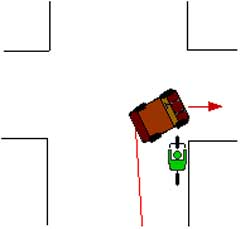The recent and tragic death of a Portland bicyclist is serving as a stark reminder that “right hook” accidents are far too common. The woman, Kathryn Leah Rickson, was struck by a semi-truck while crossing through an intersection as the truck attempted to make a right turn in front of her. Although there was a bike box at the intersection, because the light was green at the time of the incident neither party had any reason to stop, and the truck driver failed to spot Rickson in the bike lane as he turned right and collided with the cyclist.
Although it’s still undetermined whether the truck driver will be charged, from a legal perspective motorists are required to yield to bicycles. As Portland attorney Ray Thomas stated in an interview with Oregon Live, turning right across a bike lane is “like turning across a lane of traffic.” Unfortunately, as Thomas was quick to point out, “bicycles are small and difficult to see. Even professional drivers aren’t used to bike lanes.”
Due to both the high variance in speed between automobiles and cyclists, as well as the difficulty spotting a bike prior to making a right turn, “right hook” accidents are one of the leading risks for cyclists. Here’s a diagram of a typical “right hook” collision.

Obviously it’s the responsibility of drivers to be aware of any cyclists prior to making a right turn across a bike lane. However, as this recent death in Portland proves, motorists are capable of making mistakes that can have major repercussions. As a cyclist, there are a few things you can do to prevent (or seriously reduce) the risk of becoming a victim of the “right hook.”
1. Stay Further to the Left
Even though it might seem counterintuitive, by riding slightly further to the left you’re actually forcing yourself into a driver’s field of vision.
2. Glance Behind You Before Reaching an Intersection
If you see a vehicle approaching rapidly from behind you, assume the worst and prepare to slow down as they pass in case they’re planning on making a right turn.
3. Never Ride on the Sidewalk
If you’re riding on the sidewalk you’re even less visible to motorists than when you’re in the bike lane. But, since you’re moving much faster than pedestrians, you run the risk of getting struck by a car as it turns across what had previously been an unoccupied crosswalk.
None of these tips suggest that Rickson was anything less than a victim of an unfortunate tragedy, but her death should serve as a warning for all cyclists to always be aware of surrounding traffic. By taking a defensive approach and staying attentive while crossing busy intersections, it might be possible to prevent yet another needless death.
Image courtesy of Bicyclesafe.com

